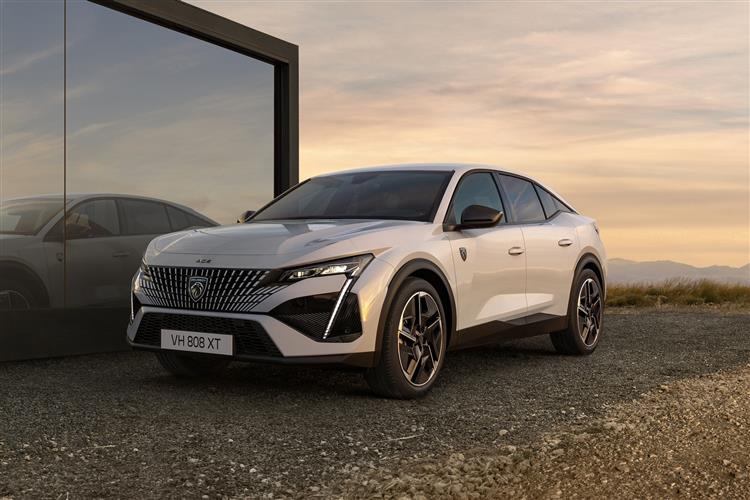CHARGE CAR (some text hidden) --NONE--
By Jonathan Crouch
Peugeot brings full-EV power to its avant garde 408 family hatch. Jonathan Crouch takes a look.
Ten Second Reviewword count: 28
Peugeot fully electrifies its aspirational 408 crossover hatch with a new battery system we haven't seen before. It makes for an unusual, slightly compromised but rather appealing confection.
Backgroundword count: 114
From the beginning, Peugeot promised us that there would be a full-EV version of its stylised mid-sized hatch, the 408. To start with, we thought it would share the same rather EV-limited drivetrain as the E-308. Then more recently, we thought it might get the more advanced and larger battery set-up used in the E-3008. In the event, there's neither, which is a curious decision on Peugeot's part. Like EV versions of the marque's other models, the car itself is remarkably unaffected by the installation of its fossil fuel-free drivetrain. So it's still a mid-sized Peugeot hatch-cum- crossover that'll have the neighbours craning their necks over the fence. Let's also take a closer look.
Engines and Tech Specword count: 279
When a manufacturer starts to talk about the amount of miles an average of EV customer drives in a day (28 miles apparently in the C-segment), you know the marketeers have been saddled with a product struggling on EV range. In the case of this E-408, that figure is 281 miles, over hundred miles down on the cars Peugeot would like it to steal sales from, like longer range versions of the Tesla Model 3 and the Polestar 2. It wasn't actually necessary for it to be hobbled like this. Apparently, the Long Range 98kWh battery offered with the E-3008 would have fitted, but Peugeot presumably didn't want this E-408 to be saddled with that bigger pack's likely downsides of heavier weight and higher cost. The car needed to do better than the fairly mediocre 257 mile EV figure of the E-308 though (which has a 51kWh usable-capacity battery), so the E-408 has ended up with a 58.2kWh usable-capacity NMC battery pack that we've never seen on a Stellantis Group model before. Which energises the same synchronous electric motor as is used in the E-3008, with 210hp and 345Nm of torque. The ordinary combustion 408 models don't provide particularly involving handling, so don't expect that here. But strengths will include refinement and an otherwise quite sporty feel thanks to the little i-Cockpit steering wheel. The driver can choose from three drive modes based on their preferences. Normal mode is the default, setting power at 190hp and torque at 300Nm, striking a balance between dynamism and range. Sport mode (210hp and 345Nm) is available for peak performance and activates automatically during kick down. ECO mode (170hp and 270Nm) prioritises range.
To see the full road test text contact us on 0330 0020 227
Pictures (high res disabled)

.jpg)
|
.jpg)
|
.jpg)
|
Statistics (subset of data only)
Min |
Max |
|
Price: |
£37,060.00 (At 1 Aug 2025, Allure) |
£39,055.00 (At 1 Aug 2025, GT) |
Max Speed (mph): |
99 (est) |
|
0-62 mph (s): |
10 (est) |
|
Electric WLTP-Rated Driving Range (miles): |
281 |
|
Length (mm): |
4687 |
|
Width (mm): |
1848 |
|
Height (mm): |
1478 |
|
Boot Capacity (l): |
471 |
|



